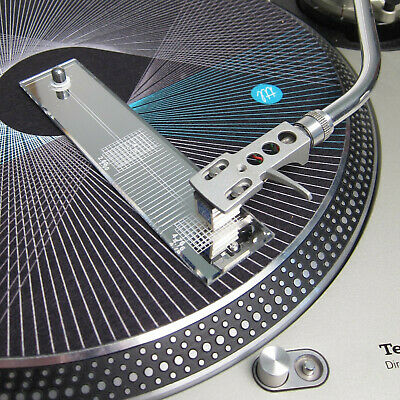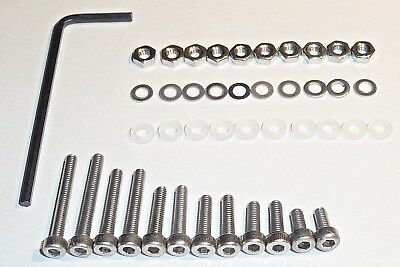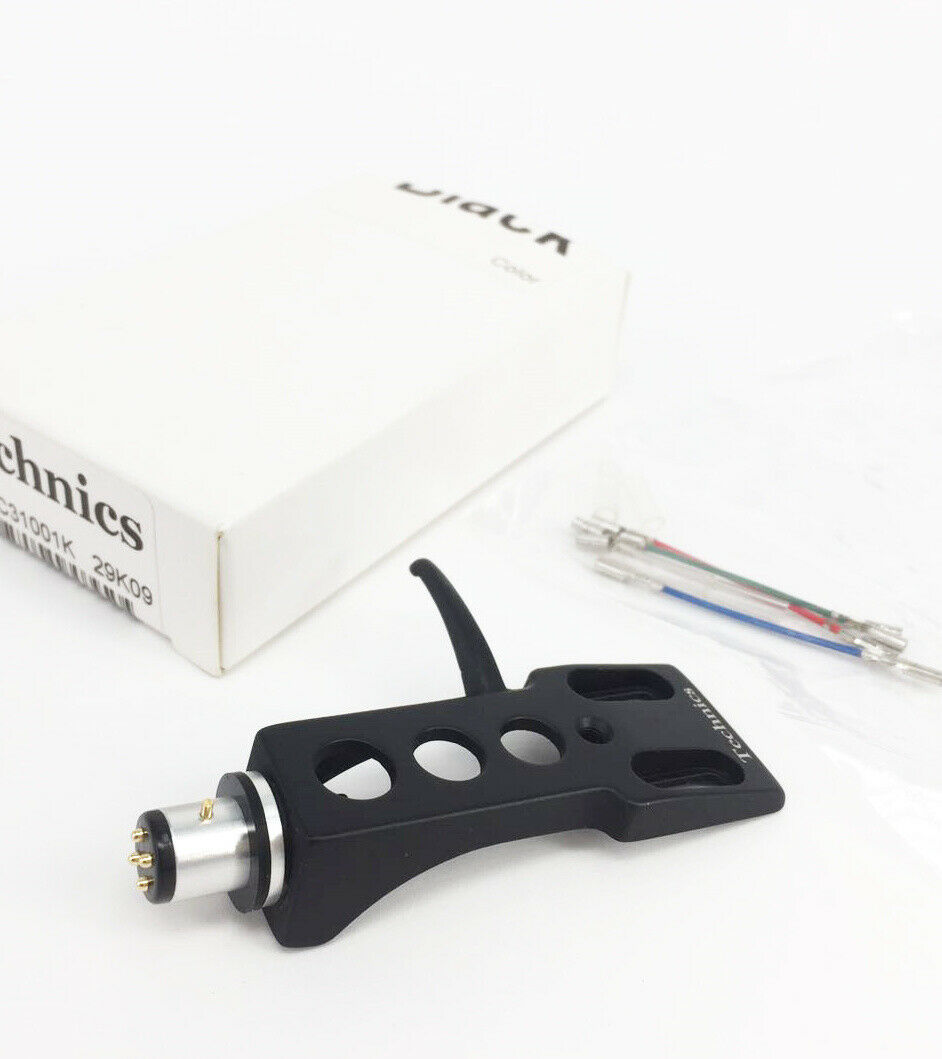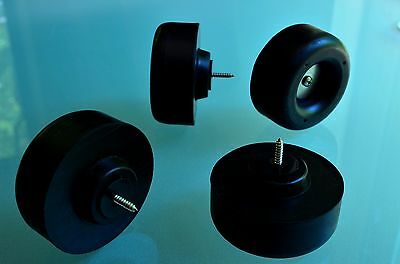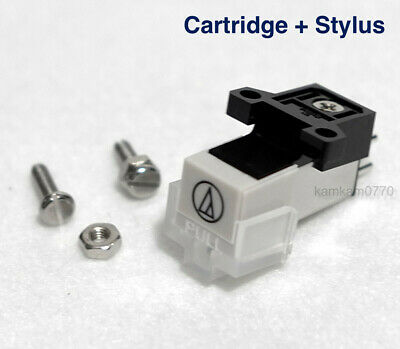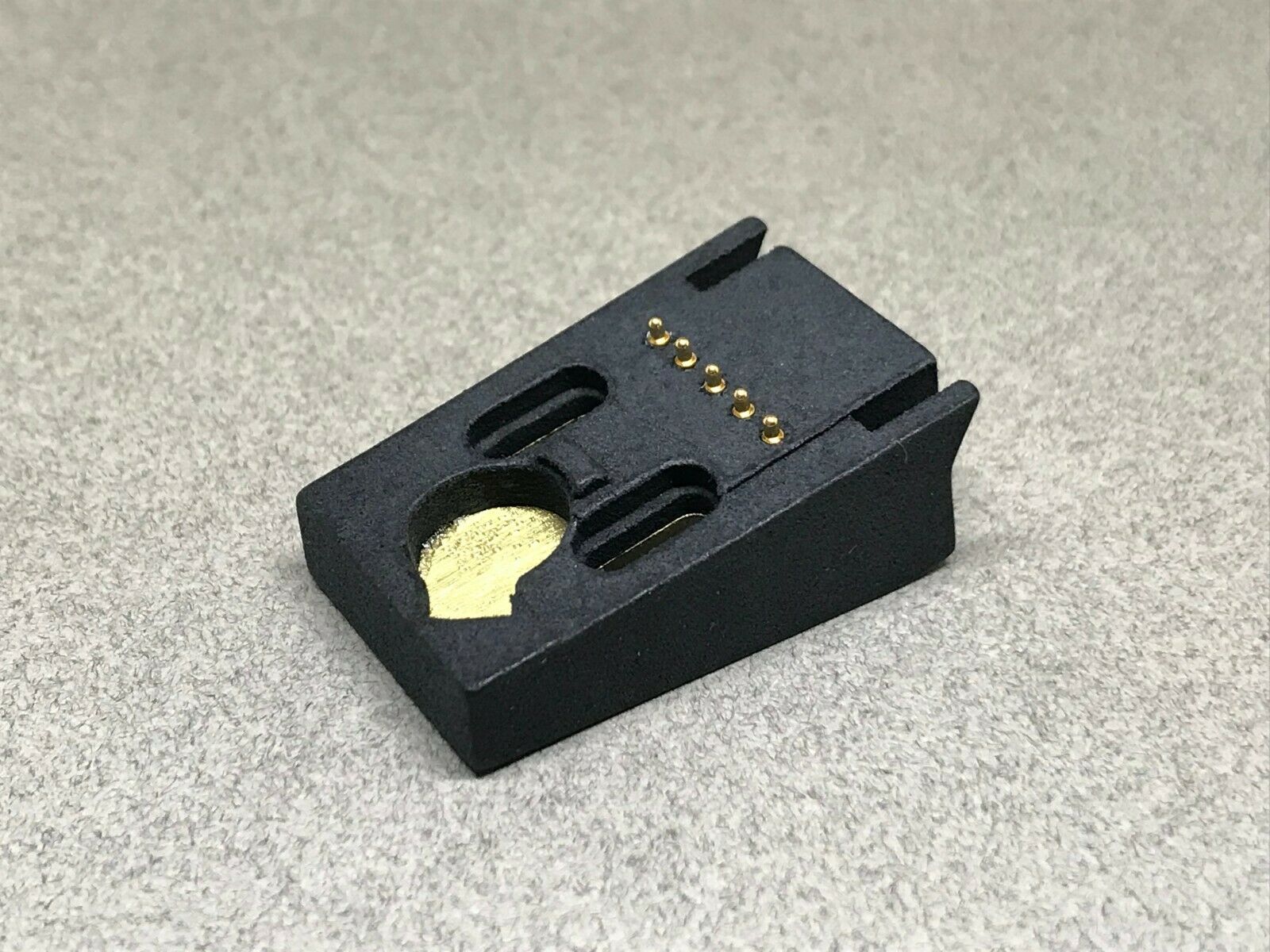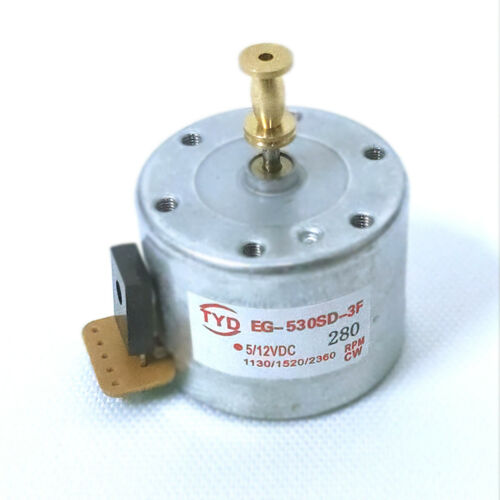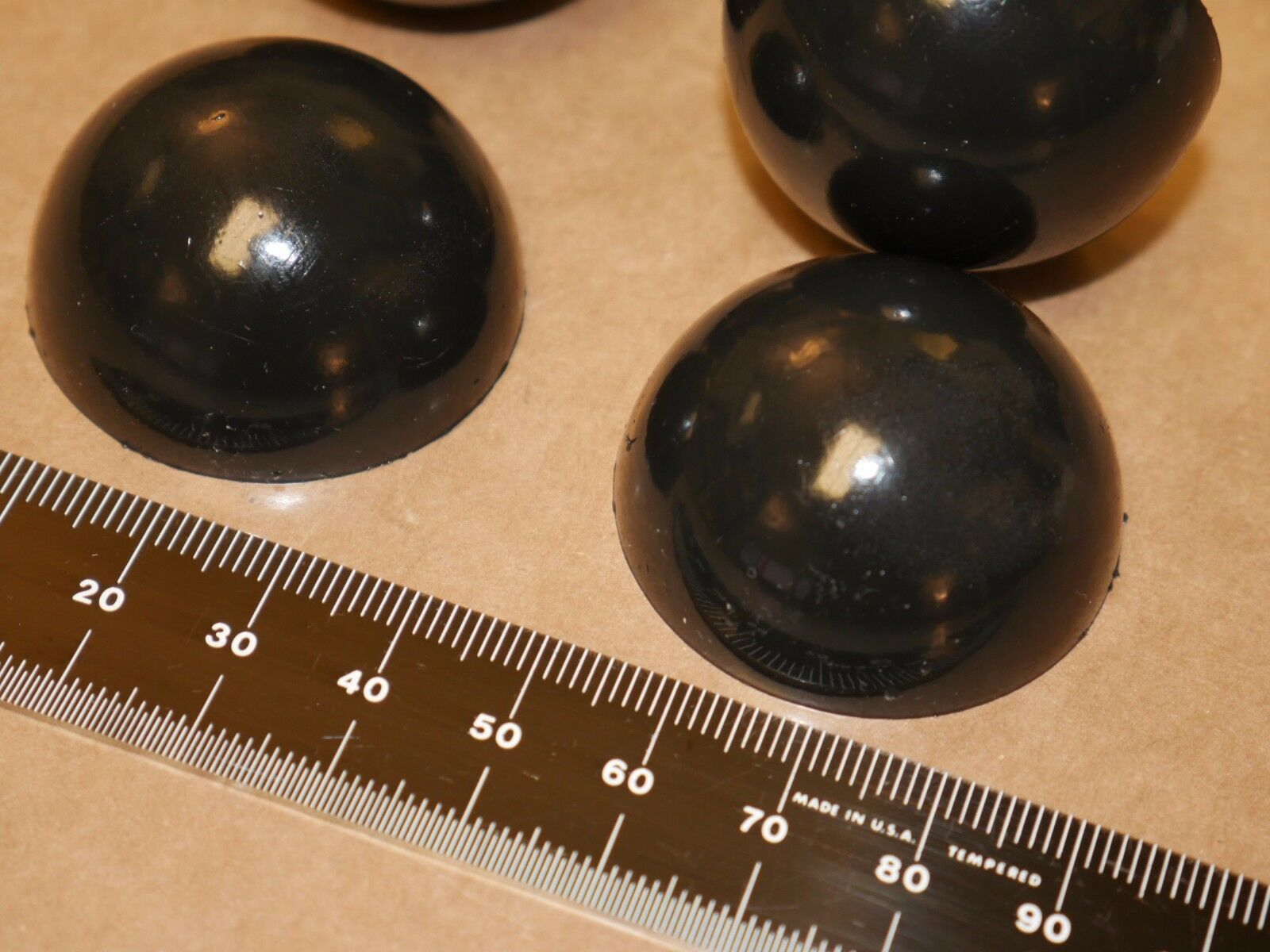-40%
High Quality Belt for Technics SL-20, SL-22, SL-23, SL-33, SL20, SL22, SL23 SL33
$ 5.17
- Description
- Size Guide
Description
Brand New Technics SL-B280 SL-B280U BeltWelcome to
Atlanta Pro Sound
••••• Under Construction - Fix Colors! •••••
Brand New Replacement Belt for
Technics models SL-20, SL-22, SL-23, SL-33
Available as
Buy it Now
one (1) brand new replacement belt for Technics turntable,
models SL20, SL-22, SL23, SL-33
Please be sure to compare shipping prices!!! Do not get tricked into spending almost .00 for US First Class delivery!
There is a myth that one belt fits 95% of all turntables. Nothing is further from the truth. (It is also a myth that all Technics tables take the same belt!!!) A belt that is an inch too large or small will probably run on your turntable, but if it is too small, it will wear out your motor years before it would under normal conditions. If it is too large, it might also be bad for the motor, but as belts get older, they expand, so in the best case, you need a replacement years before you should.
Take Note!
There are people online who have been selling belts for 5-10 years. Many have lots of feedback or websites that “look” like they know what they are doing. (One place selling belts on eBay even sells surfing supplies!) Do they
really
know what belt is the match for your turntable?
Technics
quit giving technical support on the models S-L20, S-L20A, S-L22, S-L22A, S-L33, S-L23A (including part numbers) about two decades ago. When the the last of the models
SL-20, SL-20A, SL-22, SL22A, SL-23, and SL-23A
rolled off the assembly line, I was Assistant Store Manager for the largest independent Technics dealer in the Southeastern US. Read my
Seller History
below for more information.
(In case you are wondering...I enter the model with the dash in different positions so those who search for the model can find it regardless of if they have the dash in the right place!)
5 Belt Measurements
All flat rubber belts have 5 measurements that affect the belt's performance.
Length
is the one most people think of right away. Length affects how tight the belt is. If it is too tight, the motor will not run (or if it is just a little too tight, the motor will wear out quickly).
Width
is one you might not think is important, however, the manufacturers specify this one down to the 64
th
of an inch! If the belt is too wide, the risk is the belt will hit the outsides of the capstan, which will create momentary bumps in the speed. If the belt is too narrow, it does not have enough contact with the capstan, causing it to slip. Either of these problems may be inaudible at first, but later? Who knows?
Thickness
of the belt is the smallest of the measurements. Most
Turntable
belts are close to the same thickness, but your parts provider who has only a decade of experience might buy their belts based on length and their cost alone. You could get a belt that they bought wholesale at 99 cents but is
way too thick
! A belt that is too thick will not fully fold around the capstan, causing more pitch problems. If you call to complain, you are told that your turntable has natural Wow and Flutter.
Friends: These models' Wow and Flutter is eight (8) times
below
the audible
limit
(Sources: Julian Hirsch - Hirsch-Houck Labs and the Technics models SL-B1, SL-B1A SL-B2, SL-B2A, SL-B2K SL-B3, SL-B3A, SL-B5 and SL-B5A Service Manuals)
.
Don't let them pull the wool over your eyes! If you hear wow and flutter (a.k.a. bad speed fluctuation), you might just have the wrong size belt!
External Diameter
. This one is a no-brainer, it is closely related to the thickness and internal diameter.
Internal Diameter
. Like #4, this one is also a no-brainer, it is closely related to the thickness and external diameter.
This belt is precision cut to meet original factory specifications for the Technics SL-20, SL-22, SL-23, SL-33.
The belt you are about to receive was recently manufactured by the same company that made the first belts for the Technics models SL-BD10, SL-BD10K, SL-BD20, SL-BD20K, SL-BD30, and SL-BD30K. My distributor,
Artistic Audio of Atlanta
, buys thousands of belts made by this company and has been sending them all over the United States for years. Every few of weeks
Artistic Audio of Atlanta
reorders belts buy (pun intended!) the hundred, replacing the stock they have sold. No belt is on their shelf more than a few weeks. Because they come into the distributor regularly, I can personally guarantee that the belt you get is
fresh
!
About these Models
:
The SL-20 is a fully manual belt drive turntable with a simulated metal base that was designed to operate at 33 and 45 RPMs. It has an S-shaped tone arm and required a “standard mount” Cartridge. It is fully manual, which means that you have to move the tone arm over to the record. After the record is complete, the turntable continues to play, as there is no auto pickup or auto shutoff (hence the designation, fully manual). The speed selector (on the right side of the tonearm) on the SL-20 was two position, 33, 45 with a neutral position between them. If the turntable is plugged in and the belt is fresh, then pick a speed and it will start up when you activate the speed select switch (moving the arm does
not
start rotation, use the 33/45 switch). The tonearm will cue up and down by rotating the leaver to the rear of the speed select switch. The SL-20 does not have a pitch control or a strobe light (it would be on the front left, in the little square next to the platter), however, those are available from various sellers. The turntable has a sleek, streamlined
metallic
silver base and all of the controls are to the right of the tonearm. There was a dust cover with the original model. The RCA cable and the power cable are permanently installed, you access them to the rear of the chassis.
The designation SL-20A was an identical turntable to the SL-20, but there was a Technics cartridge pre-installed when it left the factory. These were popular because the sales weasel did not have to open the box and install the customer's cartridge, however, it limited the amount of flexibility with the buyer
choosing
a cartridge. Since the cartridge is an active component and involved in the sound of the equipment, many found this off-putting. The only places the designation was noted was on the catalogue, the dealer price sheets, and on the invoices, and the original box.
The SL-22 is a semi-automatic belt drive turntable that was designed to run at 33 and 45 RPMs. It is semi-automatic, which means that you have to move the tonearm over to the record. After the record is complete, the turntable picks up the arm and returns to the off position. The speed switch (far left) on the SL-22 is three-positioned, 33, 45, and OFF. OFF is represented by a single dot. If you own one of these and the switch is in the OFF position, the platter will not spin. Some are fooled and believe the table does not work, all they need to do is flip the switch. If the turntable is plugged in and the belt is fresh, then it will start when you move the arm toward the record (the arm motion activates a switch...). Where most expect a power switch, there is a switch that says “Cut” (right side). Pressing this switch will send the turntable into the “cutoff mode”. In the middle of the front left, the SL22 has pitch controls for 33 and 34 RPMs. The pitch controls will raise the pitch by about 8%. The turntable has a sleek, streamlined grey body and the controls are in front of the dust cover, so it can be operated without raising the cover. The RCA cable and the power cable do not detach, they are attached to the inside of the turntable and come out of the rear of the chassis.
The SL-22A is the same model that was sold with a cartridge mounted on the headshell.
The SL-23 is a semi-automatic belt drive turntable that was designed to operate at 33 and 45 RPMs. It is semi-automatic, which means that there is no start button. To start the turntable, move the tone arm over to the record. After the record is complete, the turntable picks the arm up and returns to the off position. The speed switch (near the tonearm) on the SL23 was three position, 33, 45 and OFF. Off is represented by a dot. If you own one of these turntables and the switch is in the middle (where the dot is) then the platter will not spin. Some are fooled into believing the table does not work, but all they need to do is flip the switch! If the turntable is plugged in and the belt is fresh, then it will start up when you press the start button (the arm moves over to the record and activates a switch that starts the rotation). The pitch controls (also near the tonearm) will raise the pitch (speed) or lower by 6%. The turntable has a sleek, streamlined grey body and the controls are under the dust cover. The RCA cable and the power cable do not detach, they are attached to the inside of the turntable and come out of the rear of the chassis.
The SL-23A is the same model that was sold with a cartridge mounted on the headshell.
The designation SL-23A was an identical turntable to the SL-23, but there was a Technics cartridge pre-installed when it left the factory. These were popular because the sales weasel did not have to open the box and install the customer's cartridge. The only places the designation was noted was on the catalogue, the dealer price sheets, and on the invoices.
Are you about to purchase one of these models
? The motor and drive system are built like a tank. Seeing it run may be your least concern. Here is what I check before buying:
It should have a standard mount cartridge. Cartridges are metal and plastic pieces that (in these models) plug into a headshell, the headshell plugs into the arm. Cartridges also hold the stylus/needle. If you have a cartridge, but no stylus or needle, contact me where it says "Ask Seller a Question, and ask, I probably have your stylus in stock.
It should have a counterbalance (weight on the part of the arm furthest from the record). Sometimes the counterbalance gets knocked off in shipping (it happens when people ship these and do not know how to pack them to prevent this very thing!) Without the counterbalance, the turntable is worth only the money for parts. It can not be reattached, and buying a tonearm is not possible, unless you get one for parts). The cartridge should have a stylus. Styluses are “needles” that have the piece that touches the grove and plays the record. Look at the stylus. Does it have a piece of metal that lowers to the record, and is there a tip on the end of it? There are too many kinds of styluses to list them all on eBay. I have about 2,000 in stock, I probably have the one you need. If you need a stylus, click on “Ask Seller a Question” to send me a message.
The last one is really easy to check as well. There is a black plastic bar in front of the place where the tonearm pivots. That is the arm lifter. It should move up and down when you change the position of the “cue” switch (front right)
You may have heard someone say that the sound of vinyl sounds better than CDs.
“How can this be?” you may wonder...the CDs do not have that scratchy sound. It is a matter of detail, really. You can prove it yourself with a .00 thrift-store turntable and a generic stylus. Get a copy of something easy to get, something acoustic, something like James Taylor's, Carly Simon's or Carol King's greatest hits. (The demonstration works best with acoustic guitar, harp or lute, but once you have noticed the difference, you will be able to hear the difference on everything! The introduction to
Ventura
Highway by America will work well also.) Play it on your turntable, and listen especially to the very beginnings of each note in the guitar. Focus your attention to the very beginnings of each plucked string. The strings will sound almost like you can hear each of them roll off of the player's fingers. That is the way it
should
sound all of the time. Now, play the same selection on a CD. You will probably notice that the beginnings of the notes sound muffled or slow. The beginnings of the notes on the CD have much less detail than their counterparts on vinyl.
The reason is built into the way CD players work. CDs have a sampling rate of 44,100 samples per second. What this means is the volume level of a given sound is recorded at that frequency.
••••• Under Construction - Insert New Table Here! •••••
While the volume of the actual string is getting progressively louder, the volume on the CD recording is an average. As a note quickly gets louder, the CD sounds like stair steps, because we have a recording of averages for the length of time of the sample. This is why the vinyl sounds more like the original sound than the CD. Once you hear this, you will always look at listening for detail in the sound differently.
Buying a new belt so you can transfer all your vinyl to CD?
If you have read and understand the previous section, then you might want to re-think. The CD recording you make can not possibly sound the same as the vinyl, because in making the recording, you are creating the same stair-stepping sound that does not sound as good as the original vinyl! OK, OK, if you want to make CDs for the car, go ahead, but if you want to make CDs for detailed listening, maybe you should keep your vinyl.
Georgia Residents will pay 8% Sales Tax.
Shipping and handling is only .49 to any point in the
U
S
A.
Belts are shipped by 1
st
Class Mail with tracking by the USPS.
Please, ask in advance about international shipping.
Priority Mail shipping to the US is available for .95.
Most items are usually shipped within 1 business day.
Thanks in advance for your purchase!



